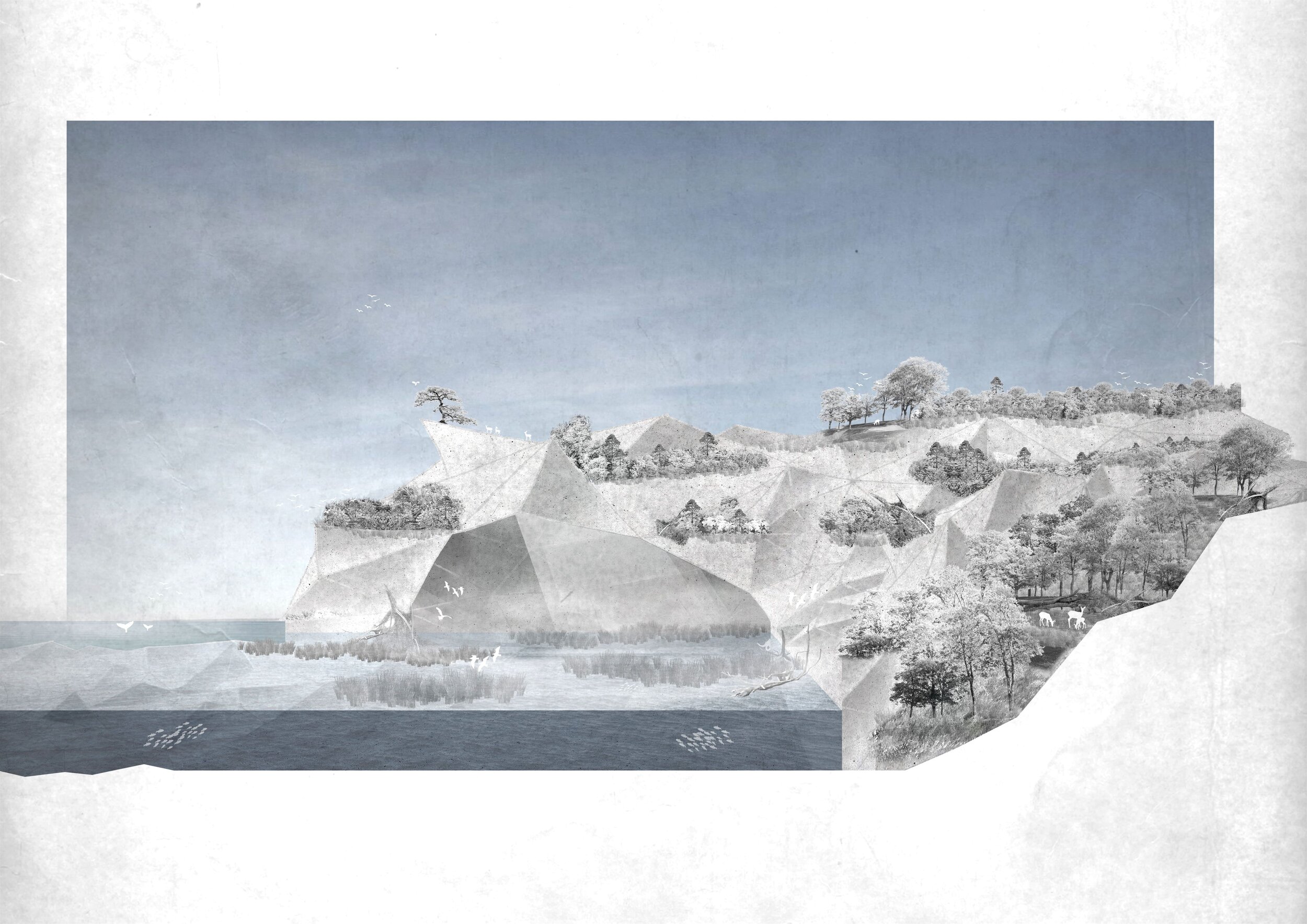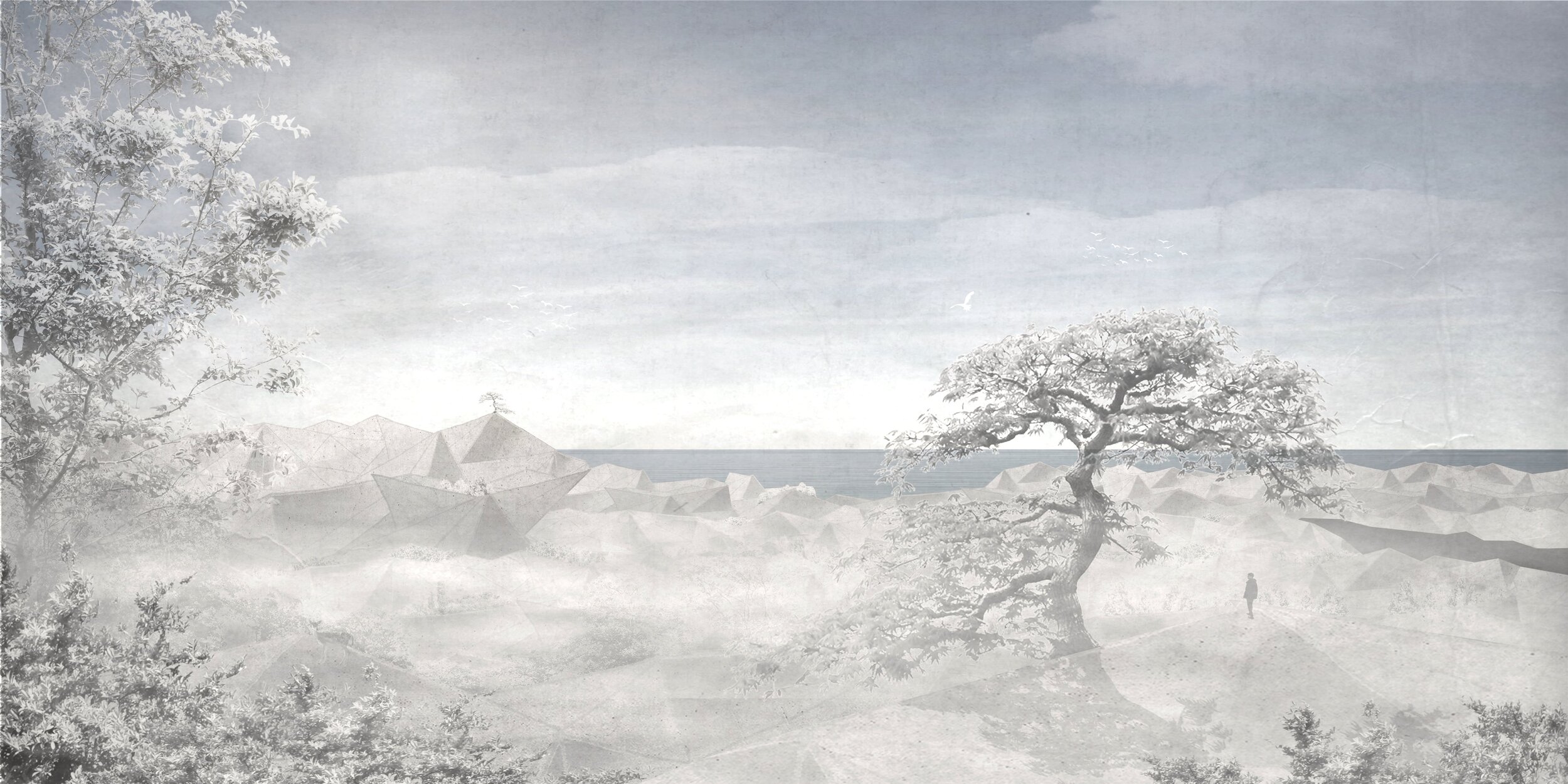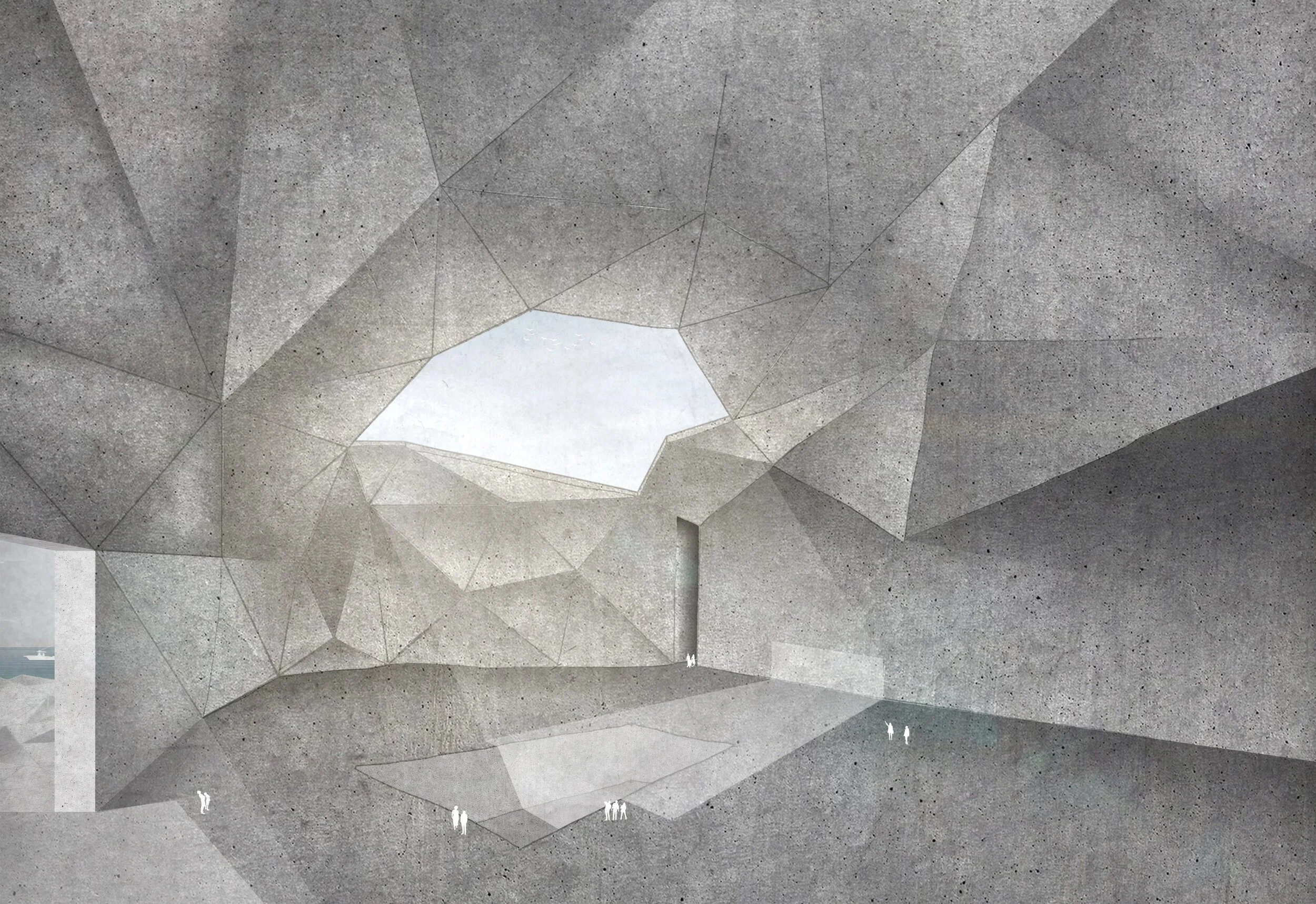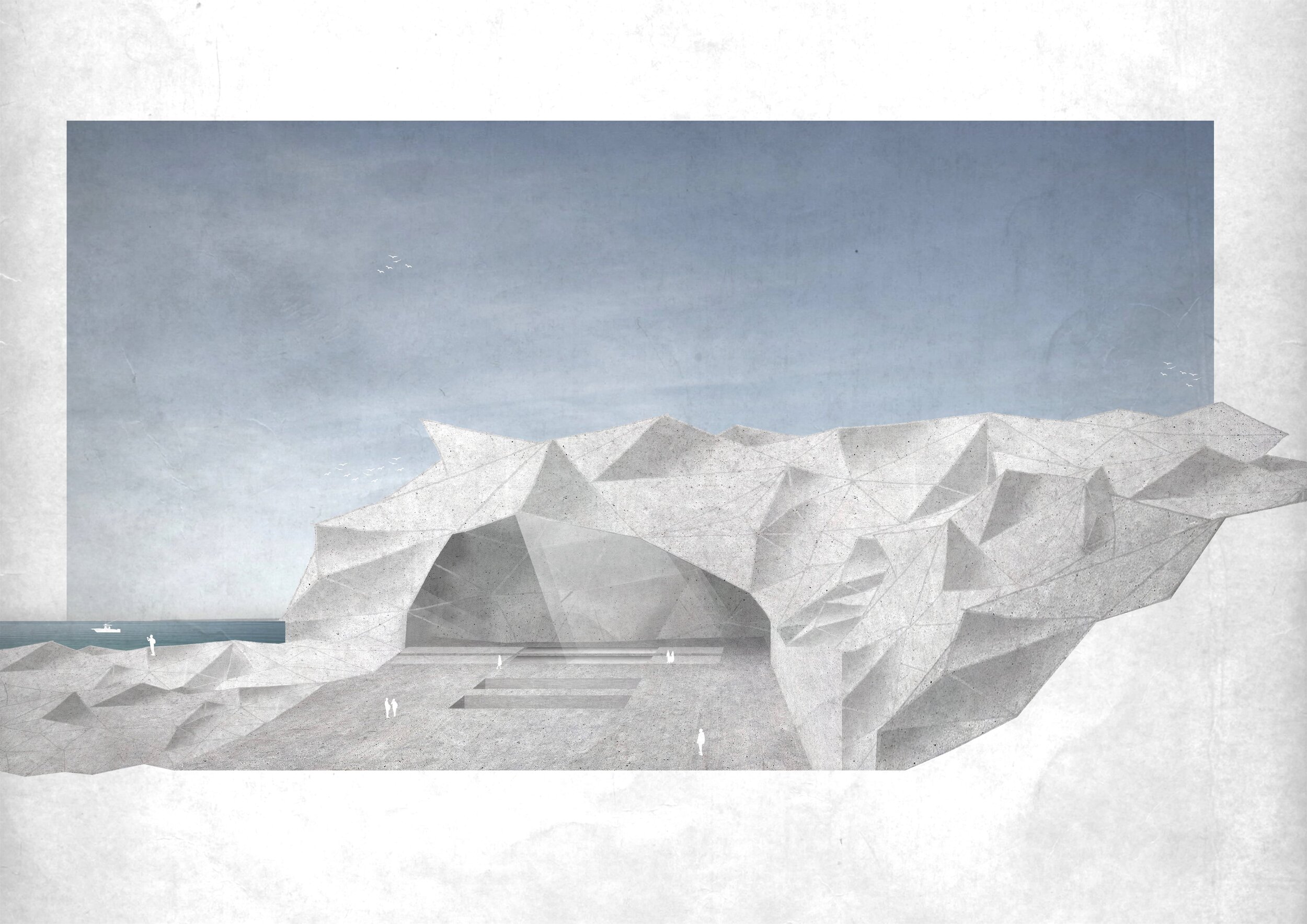
‘The Monument of Time’ by Daniel J. Derflinger
Bachelor of Architecture (2017-21)
University of Art and Design Linz, Austria
Key supervisors: Professor DI Dr. Sabine Pollak + Assistant Mag.arch Sara Hammer
The ‘Monument of Time“ reflects how responsible we are for future generations through our actions. The monument is a reminder of the nuclear disaster in Fukushima, showing what effects it had on man and nature, how vulnerable nature is, but also what strength is within it.
The design of the monument is based on a folding. This folding is laid over the topography and consists of individual triangles of different sizes. The triangular structure opens in some places, so that ora & fauna can settle. At the positions of the six reactors an interior space is formed under the folding before it merges into the sea.
Up to one and a half kilometres long, slightly sloped ramps lead to the centre of the monument. At first, the ramps have a width of 30 metres, until they converge in a funnel shape up to 5 metres wide. The two reactor halls are connected by a void, a level in the middle. Two meter thick concrete panels shield the contaminated ground from the surface. Slowly, the entrance forms from a square to a slot. Shortly before entering the hall, the supporting walls reach a height of about 30 meters. At the end of the ramp through a light slot you enter the reactor hall.
The serious accidents at the Japanese nuclear power plant Fukushima become a paradigm of ecological and social destruction. The ‘Monument of Time“ shows the consequences for present and future generations: the vulnerability of nature, the loss of home country, the stigmatisation of radiation victims. In relation to half-lives such as 24,000, 700 million or 14 billion years, people only live on earth for a short time.
How does the '‘Monument of Time“ relate to this? The work wants to make noticeable and tangible how long half-lives contaminate a place, how strong nature is and how unpredictable time is.
Daniel J. Derflinger / Bachelor or Architecture / University of Art and Design Linz, Austria 2017-21
Graduated from technical engineering college in Linz. Now studying at the Art and Design University Linz in Austria (MArch). The first inspiration was at a presentation of classical Japanese teahouses. Fascinated by its atmosphere, my journey began. In my projects I try to implement the aesthetics and concepts of Japanese architecture.
fiction, time, future, monument, contamination, nuclear politics, nature catastrophe, Japan, Fukushima




